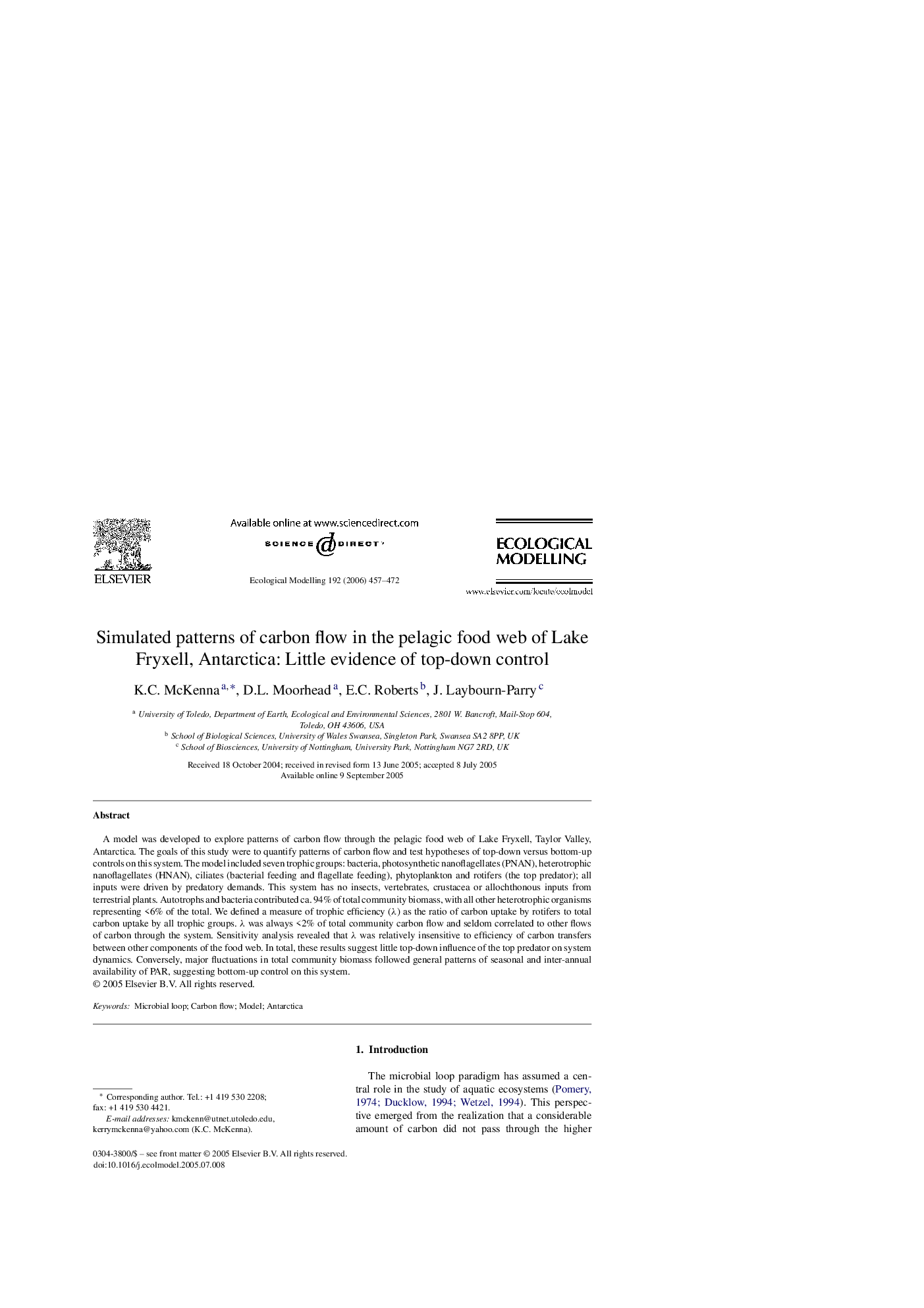| Article ID | Journal | Published Year | Pages | File Type |
|---|---|---|---|---|
| 4379289 | Ecological Modelling | 2006 | 16 Pages |
A model was developed to explore patterns of carbon flow through the pelagic food web of Lake Fryxell, Taylor Valley, Antarctica. The goals of this study were to quantify patterns of carbon flow and test hypotheses of top-down versus bottom-up controls on this system. The model included seven trophic groups: bacteria, photosynthetic nanoflagellates (PNAN), heterotrophic nanoflagellates (HNAN), ciliates (bacterial feeding and flagellate feeding), phytoplankton and rotifers (the top predator); all inputs were driven by predatory demands. This system has no insects, vertebrates, crustacea or allochthonous inputs from terrestrial plants. Autotrophs and bacteria contributed ca. 94% of total community biomass, with all other heterotrophic organisms representing <6% of the total. We defined a measure of trophic efficiency (λ) as the ratio of carbon uptake by rotifers to total carbon uptake by all trophic groups. λ was always <2% of total community carbon flow and seldom correlated to other flows of carbon through the system. Sensitivity analysis revealed that λ was relatively insensitive to efficiency of carbon transfers between other components of the food web. In total, these results suggest little top-down influence of the top predator on system dynamics. Conversely, major fluctuations in total community biomass followed general patterns of seasonal and inter-annual availability of PAR, suggesting bottom-up control on this system.
